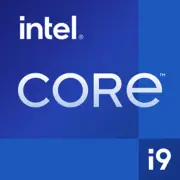Intel Core i9-11950H vs Apple M2 Max
CPU比較結果
以下は、主要なパフォーマンス特性、消費電力などに基づいた Intel Core i9-11950H と Apple M2 Max CPU の比較です。
利点
- もっと コア合計数: 12 (8 vs 12)
- より高い 製造プロセス: 5 nm (10 nm SuperFin vs 5 nm)
- より高い メモリタイプ: LPDDR5-6400 (Up to 3200 MT/s vs LPDDR5-6400)
- もっと新しい 発売日: January 2023 (May 2021 vs January 2023)
基本
Intel
レーベル名
Apple
May 2021
発売日
January 2023
Mobile
プラットホーム
Laptop
i9-11950H
モデル名
?
Intel プロセッサーの番号は、コンピューティングのニーズに適したプロセッサーを選択する際に、プロセッサーのブランド、システム構成、システムレベルのベンチマークとともに考慮すべきいくつかの要素の 1 つにすぎません。
M2 Max
Tiger Lake
コード名
Apple M2
CPUの仕様
8
コア合計数
?
コアとは、単一のコンピューティング コンポーネント (ダイまたはチップ) 内の独立した中央処理装置の数を表すハードウェア用語です。
12
16
スレッド合計数
?
該当する場合、インテル® ハイパー・スレッディング・テクノロジーはパフォーマンス・コアでのみ利用可能です。
12
-
パフォーマンスコア
8
-
エフィシエンシーコア
4
5.00 GHz
最大ターボ周波数
?
最大ターボ周波数は、インテル® ターボ・ブースト・テクノロジー、およびインテル® ターボ・ブースト・マックス・テクノロジー 3.0 (存在する場合) およびインテル® サーマル・ベロシティ・ブーストを使用してプロセッサーが動作できる最大シングルコア周波数です。 周波数は通常、ギガヘルツ (GHz)、つまり 1 秒あたり 10 億サイクルで測定されます。
-
-
基本周波数 (P)
3.5 GHz
-
基本周波数 (E)
2.4 GHz
Yes
Intel Turbo Boost Max Technology 3.0
?
Intel® Turbo Boost Max Technology 3.0 identifies the best performing core(s) on a processor and provides increased performance on those cores through increasing frequency as needed by taking advantage of power and thermal headroom.
-
5.00 GHz
Intel Turbo Boost Max Technology 3.0 Frequency
?
Intel® Turbo Boost Max Technology 3.0 identifies the best performing core(s) on a processor and provides increased performance on those cores through increasing frequency as needed by taking advantage of power and thermal headroom. Intel® Turbo Boost Max Technology 3.0 frequency is the clock frequency of the CPU when running in this mode.
-
Yes
Intel Hyper-Threading Technology
?
Intel® Hyper-Threading Technology (Intel® HT Technology) delivers two processing threads per physical core. Highly threaded applications can get more work done in parallel, completing tasks sooner.
-
-
L1キャッシュ
192K per core
-
L2キャッシュ
32MB shared
24 MB
L3キャッシュ
-
FCBGA1787
ソケット
?
ソケットは、プロセッサとマザーボード間の機械的および電気的接続を提供するコンポーネントです。
Apple M-Socket
10 nm SuperFin
製造プロセス
?
リソグラフィーとは、集積回路の製造に使用される半導体技術を指し、半導体上に構築されるフィーチャーのサイズを示すナノメートル (nm) で報告されます。
5 nm
35 W
消費電力
70 W
100°C
最高動作温度
?
ジャンクション温度は、プロセッサ ダイで許容される最大温度です。
-
20
PCI Expressレーン数
?
PCI Express (PCIe) レーンは、2 つの差動信号ペア (1 つはデータ受信用、もう 1 つはデータ送信用) で構成され、PCIe バスの基本単位です。PCI Express レーンの最大数は、サポートされるレーンの合計数です。
-
64-bit
指図書
?
命令セットは、CPU 内部に保存されているハード プログラムであり、CPU の動作をガイドおよび最適化します。 これらの命令セットを使用すると、CPU をより効率的に実行できます。 CPU を設計するメーカーは数多くあり、その結果、Intel 陣営の 8086 命令セットや ARM 陣営の RISC 命令セットなど、さまざまな命令セットが作成されます。 x86、ARM v8、および MIPS はすべて命令セットのコードです。 命令セットは拡張できます。 たとえば、x86 は、x86-64 を作成するために 64 ビットのサポートを追加しました。 特定の命令セットと互換性のある CPU を開発するメーカーは、命令セットの特許所有者からの許可を必要とします。 典型的な例は、Intel が AMD を認可し、AMD が x86 命令セットと互換性のある CPU を開発できるようにすることです。
-
Up to 1x16+1x4 | 2x8+1x4 | 1x8+3x4
PCI Express Configurations
?
PCI Express (PCIe) Configurations describe the available PCIe lane configurations that can be used to link to PCIe devices.
-
Gen 4
Microprocessor PCIe Revision
-
メモリ仕様
Up to 3200 MT/s
メモリタイプ
?
インテル® プロセッサーには、シングル チャネル、デュアル チャネル、トリプル チャネル、フレックス モードの 4 つのタイプがあります。 複数のメモリ チャネルをサポートする製品でチャネルごとに複数の DIMM を装着すると、サポートされる最大メモリ速度が低下する可能性があります。
LPDDR5-6400
128 GB
最大メモリサイズ
?
最大メモリ サイズとは、プロセッサがサポートする最大メモリ容量を指します。
96GB
2
最大メモリチャネル数
?
メモリ チャネルの数は、実際のアプリケーションの帯域幅動作を指します。
8
51.2 GB/s
最大メモリ帯域幅
?
Max Memory bandwidth is the maximum rate at which data can be read from or stored into a semiconductor memory by the processor (in GB/s).
-
8 GT/s
バス速度
-
No
ECC Memory Supported
?
ECC Memory Supported indicates processor support for Error-Correcting Code memory. ECC memory is a type of system memory that can detect and correct common kinds of internal data corruption. Note that ECC memory support requires both processor and chipset support.
-
GPUの仕様
Intel® UHD Graphics for 11th Gen Intel® Processors
統合グラフィックス
?
統合型 GPU は、CPU プロセッサに統合されたグラフィックス コアを指します。 プロセッサーの強力な計算能力とインテリジェントな電力効率管理を活用して、優れたグラフィックス パフォーマンスとスムーズなアプリケーション エクスペリエンスを低消費電力で実現します。
True
350 MHz
Graphics Base Frequency
?
Graphics Base frequency refers to the rated/guaranteed graphics render clock frequency in MHz.
-
1.45 GHz
グラフィック周波数
?
グラフィックスの最大ダイナミック周波数とは、ダイナミック周波数機能を備えたインテル® HD グラフィックスを使用してサポートできる最大日和見グラフィックス レンダリング クロック周波数 (MHz 単位) を指します。
-
12.1
DirectX Support
?
DirectX* Support indicates support for a specific version of Microsoft’s collection of APIs (Application Programming Interfaces) for handling multimedia compute tasks.
-
32
実行ユニット
?
The Execution Unit is the foundational building block of Intel’s graphics architecture. Execution Units are compute processors optimized for simultaneous Multi-Threading for high throughput compute power.
-
7680x4320@60Hz
Max Resolution (DP)
?
Max Resolution (DP) is the maximum resolution supported by the processor via the DP interface (24bits per pixel & 60Hz). System or device display resolution is dependent on multiple system design factors; actual resolution may be lower on your system.
-
4096x2304@60Hz
Max Resolution (HDMI)
?
Max Resolution (HDMI) is the maximum resolution supported by the processor via the HDMI interface (24bits per pixel & 60Hz). System or device display resolution is dependent on multiple system design factors; actual resolution may be lower on your system.
-
4096x2304@60Hz
Max Resolution (eDP - Integrated Flat Panel)
?
Max Resolution (Integrated Flat Panel) is the maximum resolution supported by the processor for a device with an integrated flat panel (24bits per pixel & 60Hz). System or device display resolution is dependent on multiple system design factors; actual resolution may be lower on your device.
-
4
Number of Displays Supported
-
eDP 1.4b | DP 1.4 | HDMI 2.0b
Graphics Output
?
Graphics Output defines the interfaces available to communicate with display devices.
-
その他
6.0
Intel Image Processing Unit
-
Yes
Intel Virtualization Technology (VT-x)
?
Intel® Virtualization Technology (VT-x) allows one hardware platform to function as multiple “virtual” platforms. It offers improved manageability by limiting downtime and maintaining productivity by isolating computing activities into separate partitions.
-
Yes
Intel Virtualization Technology for Directed I/O (VT-d)
?
Intel® Virtualization Technology for Directed I/O (VT-d) continues from the existing support for IA-32 (VT-x) and Itanium® processor (VT-i) virtualization adding new support for I/O-device virtualization. Intel VT-d can help end users improve security and reliability of the systems and also improve performance of I/O devices in virtualized environments.
-
Intel® SSE4.1 | Intel® SSE4.2 | Intel® AVX2 | Intel® AVX-512
Intel Standard Manageability (ISM)
?
Intel® Standard Manageability is the manageability solution for Intel vPro® Essentials platforms and is a subset of Intel® AMT with out-of-band management over Ethernet and Wi-Fi, but no KVM or new life cycle management features.
-
24 MB Intel® Smart Cache
Cache
?
CPU Cache is an area of fast memory located on the processor. Intel® Smart Cache refers to the architecture that allows all cores to dynamically share access to the last level cache.
-
Yes
Intel AES New Instructions
?
Intel® AES New Instructions (Intel® AES-NI) are a set of instructions that enable fast and secure data encryption and decryption. AES-NI are valuable for a wide range of cryptographic applications, for example: applications that perform bulk encryption/decryption, authentication, random number generation, and authenticated encryption.
-
Yes
Intel High Definition Audio
-
Yes
Intel Volume Management Device (VMD)
?
Intel® Volume Management Device (VMD) provides a common, robust method of hot plug and LED management for NVMe-based solid state drives.
-
Yes
Intel Boot Guard
?
Intel® Device Protection Technology with Boot Guard helps protect the system’s pre-OS environment from viruses and malicious software attacks.
-
Yes
Intel VT-x with Extended Page Tables (EPT)
?
Intel® VT-x with Extended Page Tables (EPT), also known as Second Level Address Translation (SLAT), provides acceleration for memory intensive virtualized applications. Extended Page Tables in Intel® Virtualization Technology platforms reduces the memory and power overhead costs and increases battery life through hardware optimization of page table management.
-
Yes
Intel Control-Flow Enforcement Technology
?
CET - Intel Control-flow Enforcement Technology (CET) helps protect against the misuse of legitimate code snippets through return-oriented programming (ROP) control-flow hijacking attacks.
-
Yes
Intel Deep Learning Boost (Intel DL Boost)
-
Yes
Intel Flex Memory Access
-
Yes
Intel OS Guard
-
4.6
OpenGL Support
?
OpenGL (Open Graphics Library) is a cross-language, multi-platform API (Application Programming Interface) for rendering 2D and 3D vector graphics.
-
3.0
OpenCL Support
?
OpenCL (Open Computing Language) is a multi-platform API (Application Programming Interface) for heterogeneous parallel programming.
-
Yes
Intel Quick Sync Video
?
Intel® Quick Sync Video delivers fast conversion of video for portable media players, online sharing, and video editing and authoring.
-
ベンチマーク
Geekbench 6 シングルコア
Core i9-11950H
1967
Apple M2 Max
2656
+35%
Geekbench 6 マルチコア
Core i9-11950H
8295
Apple M2 Max
14358
+73%
Geekbench 5 シングルコア
Core i9-11950H
1436
Apple M2 Max
2004
+40%
Geekbench 5 マルチコア
Core i9-11950H
7361
Apple M2 Max
15030
+104%
Passmark CPU シングルコア
Core i9-11950H
3199
Apple M2 Max
4144
+30%
Passmark CPU マルチコア
Core i9-11950H
21379
Apple M2 Max
26645
+25%









